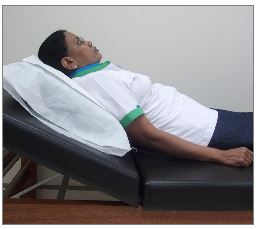If you feel dizzy and light-headed when moving from lying to sitting or sitting to standing, you could be suffering from postural hypotension.
What is Hypotension?
Blood pressure is the pressure exerted by the blood on the walls of blood vessels. It varies between a minimum (diastolic) and maximum (systolic) pressure. A blood pressure of 100mmHg (systolic) over 60mmHg (diastolic) and lower is classified as hypotension. This means a blood pressure range that is lower than normal, and may cause symptoms such as dizziness.
What is Postural Hypotension?
Postural hypotension is a drop in blood pressure of more than 20mmHg systolic and 10mmHg diastolic when changing into an upright position, e.g. moving from lying to sitting or sitting to standing.
Causes of Postural Hypotension
• Dehydration
• Atherosclerosis
• Parkinson’s disease
• Cardiac impairment
• Certain medications (such as antihypertensives)
Postural Hypotension Symptoms
The signs and symptoms generally occur after a change in position. Symptoms vary from person to person. People may experience any combination of these symptoms:
• Dizziness
• Palpitations
• Light-headedness
• Nausea
• Blurred vision
• Syncope (fainting)
• Pain or pressure along the neck and shoulders
• Weakness
Risk Factors
• Incidence increases in the elderly
• Diabetes mellitus
• After prolonged bed rest
Postural Hypotension Treatment
Advice and Education
Management of patients with postural hypotension is focused on advice and education, to help decrease the risk factors associated with this condition.
Medication
There are some medications which can help control postural hypotension.
Lifestyle Changes
There are lifestyle changes that can be made to help manage postural hypotension:
• Sleep with your head elevated 20 to 30 degrees.

• Avoid sudden postural change. Try to change position slowly, and in stages. Sit on the edge of the bed for a few minutes before standing.
• Sit back down if you feel unwell after changing position.
• Do simple lower limb exercises, such as moving your ankle up and down before and after changing position.
• Avoid bending down to pick things up.
• Avoid eating large meals.
• Avoid hot baths or showers.
• If possible, sit down to wash, shower and get dressed.
• Make sure you get enough to drink.















